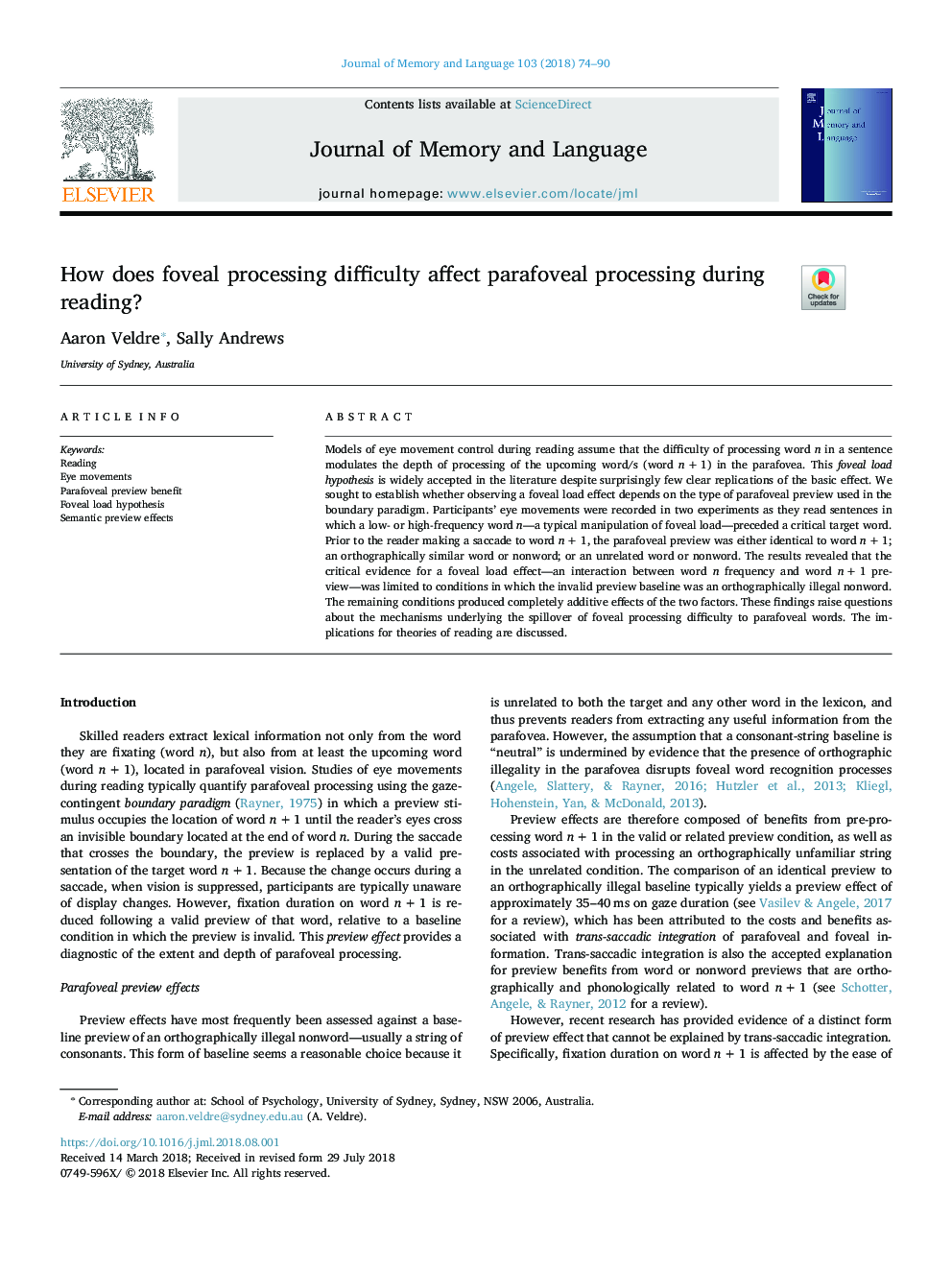| Article ID | Journal | Published Year | Pages | File Type |
|---|---|---|---|---|
| 7296753 | Journal of Memory and Language | 2018 | 17 Pages |
Abstract
Models of eye movement control during reading assume that the difficulty of processing word n in a sentence modulates the depth of processing of the upcoming word/s (word nâ¯+â¯1) in the parafovea. This foveal load hypothesis is widely accepted in the literature despite surprisingly few clear replications of the basic effect. We sought to establish whether observing a foveal load effect depends on the type of parafoveal preview used in the boundary paradigm. Participants' eye movements were recorded in two experiments as they read sentences in which a low- or high-frequency word n-a typical manipulation of foveal load-preceded a critical target word. Prior to the reader making a saccade to word nâ¯+â¯1, the parafoveal preview was either identical to word nâ¯+â¯1; an orthographically similar word or nonword; or an unrelated word or nonword. The results revealed that the critical evidence for a foveal load effect-an interaction between word n frequency and word nâ¯+â¯1 preview-was limited to conditions in which the invalid preview baseline was an orthographically illegal nonword. The remaining conditions produced completely additive effects of the two factors. These findings raise questions about the mechanisms underlying the spillover of foveal processing difficulty to parafoveal words. The implications for theories of reading are discussed.
Keywords
Related Topics
Life Sciences
Neuroscience
Cognitive Neuroscience
Authors
Aaron Veldre, Sally Andrews,
